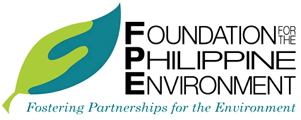News
In Maguindanao, environmentalists are also peacemakers
Posted on February 21, 2013
SK PENDATUN, Maguindanao — With the end of decades-long conflict in south-central Mindanao finally in sight, environmentalists want to contribute to forging a permanent peace in Ligawasan Marsh—the island’s largest natural habitat that has seen many clashes between government and rebel forces.
The 288,000-hectare marsh spreads across Maguindanao, North Cotabato and Sultan Kudarat provinces. It is home to about one million Maguindanaons, or “people of the floodplains.” The 2001 book Key Conservation Sites in the Philippines pictured Ligawasan Marsh as a “vast complex of river channels, extensive freshwater marshes, small freshwater lakes, ponds and arable land….including 5,000 hectares of old-growth forests.” But the marsh is also beset with insurgency problem.
Philippine government and Moro Islamic Liberation Front (MILF) leaders recently agreed to the terms for holding formal peace negotiations.
“The signing of the Bangsamoro Framework Agreement (BFA) has raised the stakes for our mission to protect the marsh,” said Nestor Carbonera, chairman and CEO of the Foundation for the Philippine Environment (FPE), which has worked with local NGO partners since 2008 to balance the ecological well-being and socio-economic needs of the marsh.
“We believe that a final peace settlement rests on strong consideration for the sustainable development of natural resources in Ligawasan Marsh, the conservation of its biodiversity, and the preservation of indigenous Maguindanaon culture,” he said. Protecting and restoring marshes and swamps—also referred to as “wetlands”—has become an important goal for environmentalists worldwide. These water-logged areas can filter and remove pollutants, including metals. They also help control floods and erosion by being reservoirs for excess water. A great variety of endemic wildlife and threatened species live and evolve in a wetland’s unique conditions.
Even before the historic BFA was signed last November 2012, environmentalists already understood the fragile situation of Maguindanaon ancestral lands. Thus, holistic programs were designed to train local environment stewards using methods that respect Muslim culture and religious teachings. FPE also tapped academic and research partners to document indigenous knowledge, systems and practices of Maguindanaons on ecological sustainability.
Mindanao conflicts are often traced to the inequitable access and control of the island’s natural?resources. “Ligawasan Marsh is a major flashpoint because of its potentially rich mineral deposits, fishing grounds and agro-forest lands,” Carbonera explained. “Affirming the rights of the Maguindanao indigenous people is vital. They should also be involved in all stages and processes of development within their ancestral domain.”
According to Carbonera, stakeholders were optimistic that the Transition Commission preparing for a Bangsamoro government would integrate the Ligawasan Marsh agenda into Bangsamoro basic laws.
Meanwhile, local and international development organizations have joined stakeholders in seeking to have the marsh declared as a national protected area by the next Congress. Among groups that have supported Ligawasan Marsh over the years are FPE, Maguindanaon Development Foundation, Ateneo de Davao University-TropICS, Lutheran World Relief, and Peace and Equity Foundation.
“For the Bangsamoro, the Ligawasan Marsh is equated to life itself,” Carbonera noted. “Born to the marsh, they had lived according to its conditions and therefore will defend their legacy and rights as children of the marsh.

 DISPLAY CALENDAR
DISPLAY CALENDAR
 Read Policy Briefs
Read Policy Briefs
 View Our Partners
View Our Partners
 Access Grants MIS
Access Grants MIS
 Login to Webmail
Login to Webmail